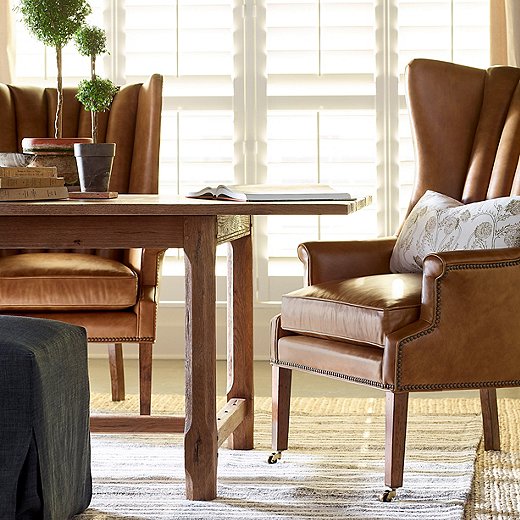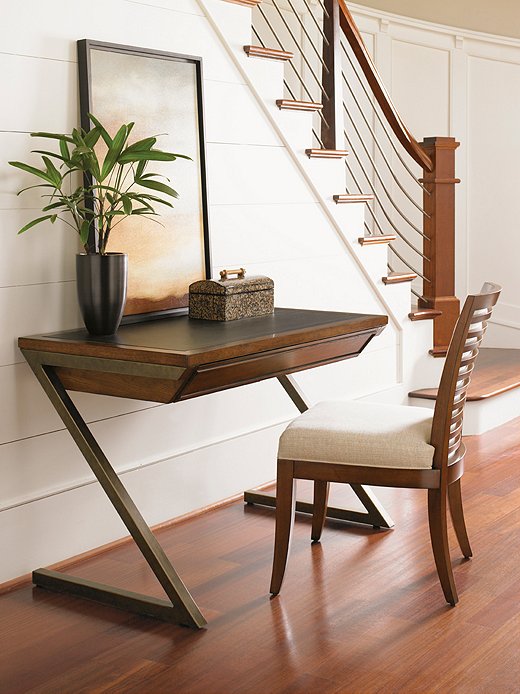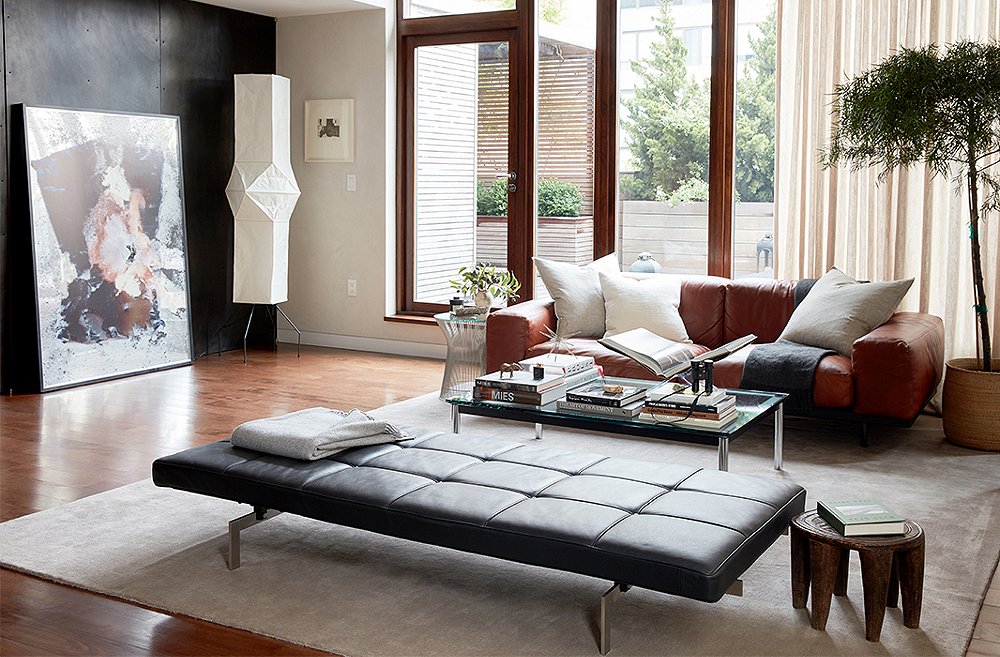As a furnishing material, leather is wildly versatile. It adds to both the gravitas of a button-tufted chesterfield sofa and the boho chic of a hand-stitched pouf. Sleeks stools clad in white leather brighten up a modern space; a woven leather basket instantly ups a room’s glam quotient.
Leather is also surprisingly practical: easy to clean, hypoallergenic, and usually quite durable. Unlike many fabrics, it doesn’t retain smells, and it generally becomes even more handsome with time. Perhaps best of all, leather transcends trends. Fabrics, colors, and prints may go in and out of style, but leather has long been a symbol of high quality and discerning taste.
But not all leather is alike. Should you opt for full-grain or top-grain? Aniline or semi-aniline? Here’s what to know about the terms most frequently bandied about.
Full-grain leather is made with the very top layer, or grain, of the hide. Basically it’s hair-on hide with the hair removed but any imperfections—scars, discolorations—left behind. The most desirable top-grain leathers have just minimal imperfections that add to their organic beauty. This type of leather is the most durable, and if not covered with a protective layer, over time it will become somewhat darker, smoother, and more lustrous.
You might expect top-grain leather to also include the top grain of the hide. Well, it does have some of that top layer. The surface, though, has been sanded or buffed to remove imperfections, creating a more uniform appearance. As well as making the leather smoother and softer, however, the buffing also makes it more susceptible than full-grain leather to scratches, scrapes, and stains. Fortunately certain treatments (see semi-aniline leather below) can rectify that, making top-grain as well suited as full-grain for everyday use.

The full-grain aniline leather upholstery the Philosopher Wing Chair will gain a rich patina over time, adding to its already-considerable stateliness.

The leather top of the Harborview Desk adds traditional elegance to the contemporary frame.
Bonded leather, also called regenerated leather, is made of leather scraps that are shredded or ground down before being mixed with latex, polyurethane, or other materials and then pressed into sheets. If you’ve ever come across a leather bag or sofa that has cracked or chipped with frequent use, it was probably made of bonded leather. That said, regenerated leather is much more affordable than full-grain or top-grain leather, and it’s a worthy option for pieces that won’t be used frequently.
Aniline leather is almost certain to be full-grain leather. Aniline refers to the dye used, which penetrates the leather so that it adds color without affecting the texture or hiding any imperfections. Semi-aniline leather has been treated with a light protective coating that also includes dye. While some semi-aniline leathers are full-grain, others are top-grain, with the coating making the material less susceptible to stains, scratches, and fading from the sun.
The quality of faux leather—aka synthetic leather, vegan leather, and cruelty-free leather—has improved dramatically during the past few decades. Usually made with polyurethane (PU) or polyvinyl chloride (PVC), it’s generally resistant to stains and UV rays. On the flip side, it’s more likely to tear or crack than full-grain or top-grain leather.

Join the Discussion